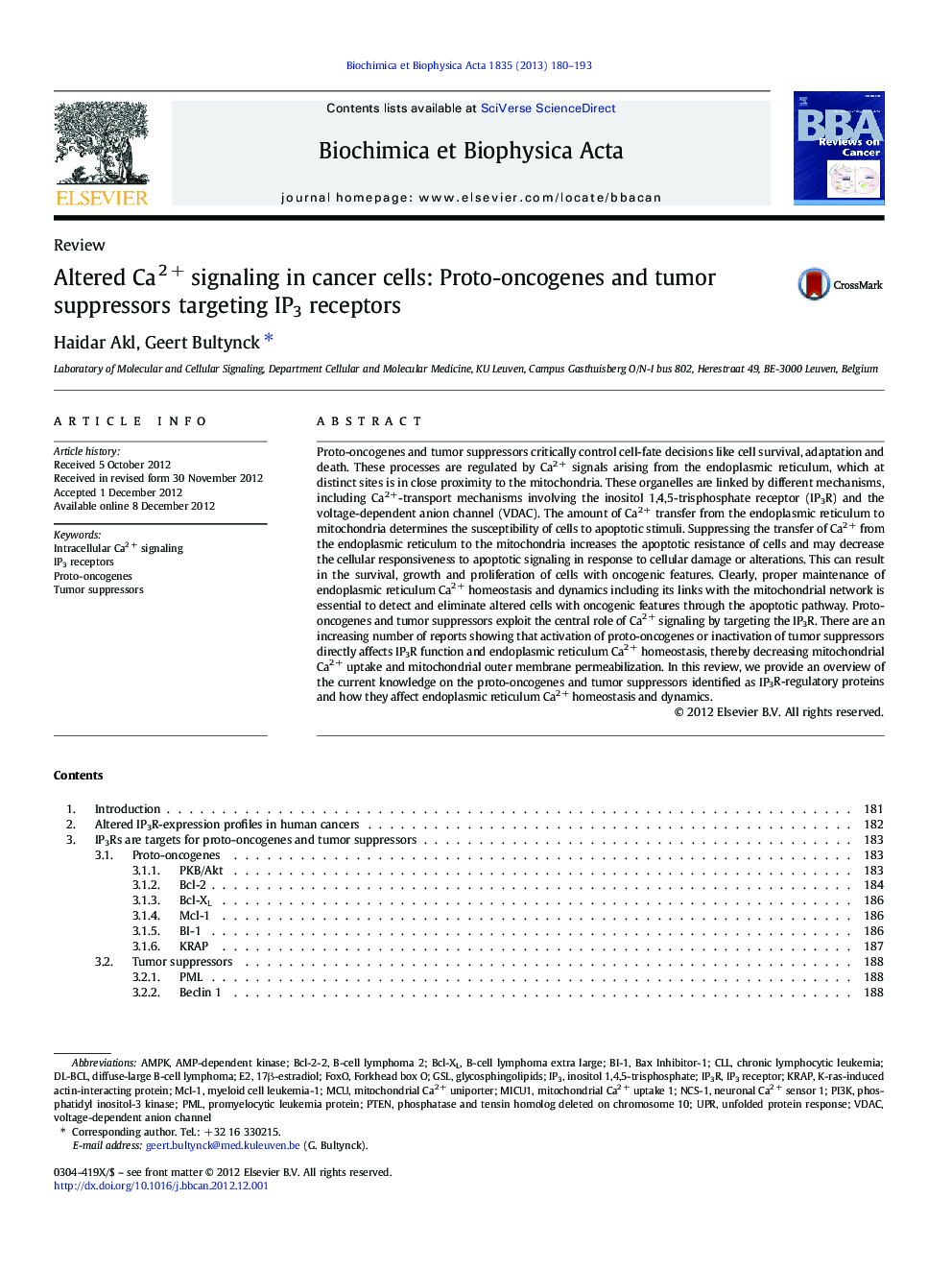| Article ID | Journal | Published Year | Pages | File Type |
|---|---|---|---|---|
| 2100939 | Biochimica et Biophysica Acta (BBA) - Reviews on Cancer | 2013 | 14 Pages |
Proto-oncogenes and tumor suppressors critically control cell-fate decisions like cell survival, adaptation and death. These processes are regulated by Ca2 + signals arising from the endoplasmic reticulum, which at distinct sites is in close proximity to the mitochondria. These organelles are linked by different mechanisms, including Ca2 +-transport mechanisms involving the inositol 1,4,5-trisphosphate receptor (IP3R) and the voltage-dependent anion channel (VDAC). The amount of Ca2 + transfer from the endoplasmic reticulum to mitochondria determines the susceptibility of cells to apoptotic stimuli. Suppressing the transfer of Ca2 + from the endoplasmic reticulum to the mitochondria increases the apoptotic resistance of cells and may decrease the cellular responsiveness to apoptotic signaling in response to cellular damage or alterations. This can result in the survival, growth and proliferation of cells with oncogenic features. Clearly, proper maintenance of endoplasmic reticulum Ca2 + homeostasis and dynamics including its links with the mitochondrial network is essential to detect and eliminate altered cells with oncogenic features through the apoptotic pathway. Proto-oncogenes and tumor suppressors exploit the central role of Ca2 + signaling by targeting the IP3R. There are an increasing number of reports showing that activation of proto-oncogenes or inactivation of tumor suppressors directly affects IP3R function and endoplasmic reticulum Ca2 + homeostasis, thereby decreasing mitochondrial Ca2 + uptake and mitochondrial outer membrane permeabilization. In this review, we provide an overview of the current knowledge on the proto-oncogenes and tumor suppressors identified as IP3R-regulatory proteins and how they affect endoplasmic reticulum Ca2 + homeostasis and dynamics.
Graphical abstractDifferent proto-oncogenes and tumor suppressors target the IP3 receptor (IP3R), thereby regulating Ca2 +-signaling events from the endoplasmic reticulum (ER) that control different hallmarks of cancer cells, including proliferation, apoptosis, autophagy and cellular bio-energetics.Figure optionsDownload full-size imageDownload high-quality image (119 K)Download as PowerPoint slide
